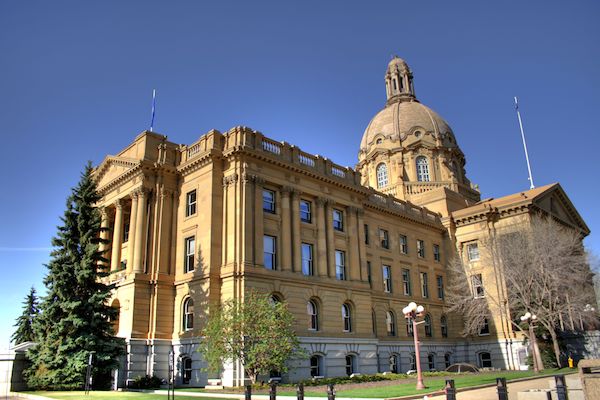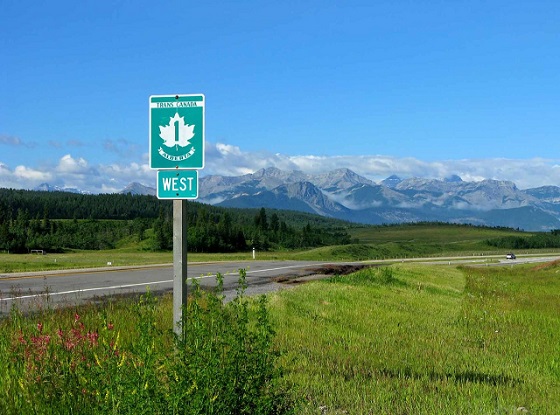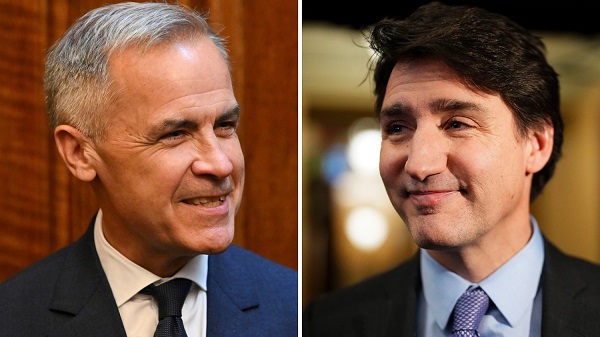Alberta
Alberta’s projected surplus balloons: Mid-year budget update

Mid-year update: Keeping Alberta’s finances on track
Alberta’s government continues to manage the province’s finances responsibly with the future in mind.
Alberta continues to lead the nation in economic growth and is forecasting a surplus of $5.5 billion in 2023-24, an increase of $3.2 billion from Budget 2023. The province’s fiscal outlook continued to improve in the second quarter of 2023-24, boosted by strong bitumen royalties and higher income tax revenues.
However, volatile oil prices, continued inflation challenges and uncertainty due to slowing global growth could still affect the province’s finances going forward. Debt servicing costs will be higher than previous years due to higher interest rates, reinforcing the importance of the government’s commitment to balance the budget.
“Alberta continues to stand out as a leader when it comes to fiscal stability and economic resilience in the midst of so much global uncertainty. Our second-quarter fiscal update is another positive report, showing strength in Alberta’s finances and economy and positioning us for future growth and prosperity.”
The government continues to spend responsibly, maintaining its commitment to keep funds in the province’s contingency for disasters and emergencies. The government’s new fiscal framework requires the government to use at least half of available surplus cash to pay down debt, freeing up money that can support the needs of Albertans for generations. The government continues to reduce the province’s debt burden and will pay down a forecasted $3.2 billion in debt this fiscal year.
Alberta’s government is turning its focus to developing next year’s budget, so it supports Albertans’ needs and the province’s economic growth while maintaining the government’s commitment to responsible spending within the fiscal framework. Budget 2024 consultations are open and Albertans are encouraged to share their feedback to help set the province’s financial priorities.
Revenue
- Revenue for 2023-24 is forecast at $74.3 billion, a $3.7-billion increase from Budget 2023. The increase is due to increases across different revenue streams. In addition, the price of West Texas Intermediate (WTI) oil is forecast to average US$79 per barrel over the course of the fiscal year, in line with the Budget 2023 forecast.
- Personal and corporate income tax revenue is forecast at $21.8 billion, $1.8 billion higher than at budget.
- Bitumen royalties are forecast at $14.4 billion, an increase of $1.8 billion from budget.
- Overall resource revenue is forecast at $19.7 billion, $1.3 billion higher than the budget forecast.
- Beginning in 2024, Alberta’s government will continue to offer fuel tax relief when oil prices are high, even as the province transitions back to the original fuel tax relief program, which is based on average quarterly oil prices.
- Albertans will save some or all of the provincial fuel tax on gasoline and diesel when oil prices are $80 per barrel or higher during each quarter’s review period.
- Although oil prices have been below $80 in recent weeks, Albertans will continue to save at least four cents per litre on the provincial fuel tax in the first three months of 2024 as the tax is phased back in.
- The government’s fuel tax relief efforts, which include the pause to the end of 2023 and additional savings over the first three months of 2024, are forecast to reduce other tax revenue by $524 million in 2023-24.
Expense
- Expense for 2023-24 is forecast at $68.8 billion, a $481-million increase from Budget 2023.
- Capital grants are up marginally from Budget 2023, but down from the first-quarter forecast, mainly due to funding schedules for Calgary and Edmonton LRT projects.
- Debt servicing costs are forecast to increase $309 million from budget, a reflection of ongoing high interest rates and inflation.
- Total expense has increased by $1.9 billion, $0.5 billion is directly offset by revenue and $1.4 billion is absorbed by the $1.5-billion contingency.
- In total, $123 million of the 2023-24 contingency remains unallocated.
- $1.2 billion in disaster and emergency costs are forecast for the current fiscal year.
- $750 million for fighting wildfires in the province
- $165 million for AgriRecovery to support livestock producers affected by dry conditions
- $253 million to provide financial assistance to communities for uninsurable damage from spring wildfires and summer flooding
- $61 million for evacuation and other support
- The operating expense forecast has increased by $319 million, including an additional:
- $301 million for Health
- $48 million for Advanced Education
- $48 million for Energy and Minerals
- $33 million for Mental Health and Addiction
- $30 million for Education
- $14 million for Indigenous Relations
- Offset by decreases of $187 million for lower-than-expected program take-up of affordability payments and re-profiling of TIER spending to 2024-25.
Alberta Heritage Savings Trust Fund
- The Alberta Heritage Savings Trust Fund’s market value on Sept. 30, 2023, was $21.4 billion, up from the $21.2 billion reported at March 31, 2023.
- The Heritage Fund returned 0.9 per cent over the first six months of 2023-24.
- Over the five-year period ending on Sept. 30, 2023, the Heritage Fund returned 5.9 per cent, which is 0.5 per cent above the return of its passive benchmark. While the Heritage Fund is outperforming its benchmark return, it is below the long-term real return target of 6.9 per cent, again a result of interest pressures.
- The Heritage Fund generated net investment income of $1 billion in the first half of the fiscal year.
Economic outlook
- Alberta’s economy continues to be resilient, with continued growth projected over the three-year forecast.
- Alberta’s real gross domestic product (GDP) is expected to grow 2.8 per cent in 2023, in line with the Budget 2023 forecast.
- Despite interest rate increases, high prices and slower global economic growth, Alberta’s economy is forecast to keep expanding. The pace of growth, however, will be slower compared with the last two years when the province was recovering from the pandemic.
Alberta Fund
- The amount of surplus cash available for debt repayment and the Alberta Fund is determined after a number of required cash adjustments have been made. For 2023-24, this includes $5.1 billion from the 2022-23 final results to start the year.
- The Alberta Fund contribution for 2023-24 is forecast at $1.6 billion.
- Money in the Alberta Fund can be used toward additional debt repayment, the Heritage Savings Trust Fund, or one-time initiatives that do not permanently increase government spending.
Related information
Alberta
Tell the Province what you think about 120 km/h speed limit on divided highways

Alberta’s government is engaging with Albertans on increasing speed limits on rural highways.
Starting Nov. 7, Albertans can share their views on modernizing speed limits on divided highways through an online survey running until Dec. 12. The survey will ask how Albertans view raising the speed limit by 10 km/h on various highways from 110 km/h to 120 km/h.
“Alberta’s government is investigating how to safely increase speed limits on divided highways, and if Albertans support increasing speed limits. We are investing more than $1.5 billion this year alone to improve highway safety and upgrade infrastructure across the province. We want Albertans to be able to drive the speed limit that the highways are designed for. Modern vehicles combined with public awareness mean we can explore higher speed limits.”
The survey will provide Albertans with the opportunity to provide input on which highways they would prioritize having a speed limit increase, their views on restricting commercial trucks from using the far-left lane on highways with three or more lanes and any other feedback that would improve driving experiences on provincial highways.
Following a review of the survey results, Alberta’s government plans to conduct a mini-trial of a 120 km/h speed limit to assess the impacts of higher speed limits on divided highways. The trial will include strong monitoring to assess driving behaviour.
Alberta’s government reminds motorists to slow down and drive to the conditions. Speed limits are set for ideal conditions. When roads are wet, icy or when there is reduced visibility, motorists should slow down.
Quick facts
- Alberta’s provincial highway network includes more than 64,000 lane kilometres of highways, about 11,700 lane kilometres of which are divided.
- The posted speed limits of Alberta’s divided highways range from 100 to 110 km/h, although the posted speed limits on segments passing through cities, towns and First Nation lands can be as low as 50 km/h due to factors such as signalized intersections, pedestrians and local access.
Related information
- The survey is available online.
Alberta
Alberta Announces Members of Class Size and Complexity Committee

A new Class Size and Complexity Cabinet Committee has been struck to address classroom challenges.
Taking action on class size and complexity
Classrooms in Alberta continue to grow and are becoming increasingly complex, and immediate action is needed to address these issues in the public education system. To meet these issues head on, the Class Size and Complexity Cabinet Committee has been created. The cabinet committee will help guide government policy and deploy resources to deal with class sizes and classroom complexity.
“We are committed to providing world-class education, and we’re building schools and funding education at a rate unprecedented in this province. This committee will help us address the concerns of teachers, parents and students around class sizes and complexity.”
Throughout November, Alberta’s government will continue work with school boards to collect data on class sizes and classroom composition. The cabinet committee will use this data to direct resources to the classrooms that need it the most. Starting in January, this data will be made available and released annually.
The Class Size and Complexity Cabinet Committee will be co-chaired by the Premier of Alberta and the Minister of Education and Childcare. It will also include non-voting members representing school boards, administrators and a teacher representative of the ATA. The committee will also hear from school boards, academic experts, teachers, educational assistants, complex needs specialists and parents to inform its decisions and guide this vital work.
“We heard teacher concerns, and we are providing solutions. The Class Size and Complexity Cabinet Committee will help us take immediate action and ensure teachers and students are given the support they need to succeed.”
In June 2025, Alberta’s government established the Aggression and Complexity in Schools Action Team to provide advice on addressing classroom complexity. The report has been received and will be released soon. Over the coming months, the cabinet committee will start rolling out solutions informed by the action team’s recommendations. In addition, the committee will guide the creation of a new inclusive education policy framework.
“The work of this committee will support teachers in responding to the growing complexity in our classrooms. We will ensure that the voices of the contributors to the initial work guide
solutions that truly improve the educational experience for students and the educators who serve them.”
“I appreciate the government’s recognition of the impact of classroom complexity and their commitment to working collaboratively for improvement. Supporting teachers ultimately improves classroom conditions and student outcomes.”
Using data collected, this cabinet committee will also guide Alberta’s government in executing its commitment to hire 3,000 new teachers and 1,500 new educational assistants over the next three years. They will also assist in identifying and prioritizing where new schools and modulars should be built, advancing the government’s commitment to invest $8.6 billion to build 130 new schools, and provide 109 modular classrooms in the growing communities that need them urgently.
Quick facts
- Members of the Class Size and Complexity Cabinet Committee include:
- Danielle Smith, Premier of Alberta
- Demetrios Nicolaides, Minister of Education and Childcare
- Jason Nixon, Minister of Assisted Living and Social Services
- Rick Wilson, Minister of Mental Health and Addiction
- Searle Turton, Minister of Child and Family Services
- Lynnette Anderson, chief superintendent, Edmonton Catholic Schools
- Nicole Buchanan, chair, Red Deer Public Schools
- Marilyn Dennis, former president of Alberta School Boards Association
- Mike McMann, superintendent, Fort Vermilion Schools and President, College of Alberta School Superintendents
- Joanne Pitman, chief superintendent, Calgary Board of Education
- Dr. Elissa Corsi, Alberta Teachers’ Association
- Only Cabinet members are voting members. Additional guests will be invited to attend and share their expertise at the discretion of the chairs.
- School boards will be required to submit data on Alberta classrooms by Nov. 24.
-

 Business2 days ago
Business2 days agoCarney budget doubles down on Trudeau-era policies
-

 COVID-192 days ago
COVID-192 days agoCrown still working to put Lich and Barber in jail
-

 Business2 days ago
Business2 days agoCarney budget continues misguided ‘Build Canada Homes’ approach
-

 Business2 days ago
Business2 days agoCarney’s Deficit Numbers Deserve Scrutiny After Trudeau’s Forecasting Failures
-

 armed forces1 day ago
armed forces1 day agoIt’s time for Canada to remember, the heroes of Kapyong
-

 Alberta1 day ago
Alberta1 day agoAlberta Announces Members of Class Size and Complexity Committee
-

 International2 days ago
International2 days agoKazakhstan joins Abraham Accords, Trump says more nations lining up for peace
-

 Also Interesting2 days ago
Also Interesting2 days agoAlberta Puts Player Safety First in Upcoming iGaming Launch







